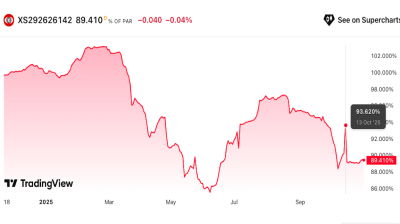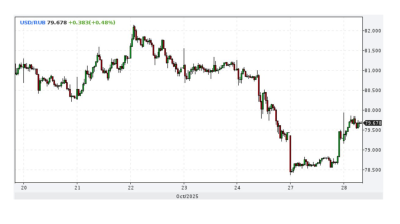Bond issues in Central Europe picked up in June. The total of $5.3bn from seven issues in June was the most issued in the last four years. Eastern Europe and Russia also had a good month with issues of $5.1bn and $3.2bn respectively, but those volumes were still down on the bumper crop of bond issue in 2017, which remains a vintage year.
In Central Europe the amount of bond issues was also up to $29.1bn in the first six months of this year against the total of $25.9bn that was issued in the same period a year earlier. Issues are going well this year to date in comparison to last year thanks to the very strong first quarter when well over half of all the bonds issued this year were issued – collectively two thirds (64%) of all the bonds issued this year were issued in the first quarter.
In Eastern Europe and Russia too the market is up marginally on last year with $18.1bn and $13.6bn issues in the first six months of this year, respectively, up from the $17bn and $9.5bn issued last year.
The first quarter has been better than the second in this region too, but not by as much. January was almost completely dead for bond issues in Eastern Europe, accounting for only 1.4% of this year’s total issues, but March was massive, accounting for 37.7% in Eastern Europe and a whopping 45%.6% in Russia.
Amongst the issuers in Central Europe, there was heavy sovereign activity where the governments of Croatia, Serbia and Lithuania all issued bonds (€1.5bn, €1bn, €1.5bn respectively) with yields of between 1.125% and 1.65%. Latvia had already issued its €1bn sovereign bond in May and Slovakia did the same in April to complete the set. The Croatian bond was particularly successful, getting away on the best terms ever for the country and was 3.7-times oversubscribed.
Unusually for Eastern Europe there were some significant non-Russian issues of which a sovereign issue by the government of Ukraine to raise €1bn with a seven year bond priced at 6.75% was the largest. The bond was a big success, pricing below the 7% most analysts thought it would command and has laid the groundwork for some big Ukrainian corporate issues later this year –Ukrzaliznytsia (Ukrainian Railway) has already got a $500mn bond away in the first days of July as a result.
Amongst the other significant bonds issues in Eastern Europe was a $500mn note from steel giant Magnitogorsk Iron and Steel Works (MMK) that matures in 2024 and was priced at close to the sovereign of 4.375%.
Interestingly the smaller issuers are coming back into the market and Russian retail bank Renaissance Credit issued a €50mn bond that matures in 2024 with a 10% yield. There has been barely any wholesale funding on the international markets for Russian retail credit operations since the business blew up in 2008. Up and coming Russian broker-dealer BCS Global Markets also continues to issue a string of small bonds to fund its operations, this month placing a $10mn note that matures in 2024 with a yield of 6.25%.
June, July and August are normally dead months for Eastern Europe’s bond market and issues last year were next to nothing. However, the outlook for this year is better. Emerging market bonds are back in fashion following the US Federal Reserve bank's decision to stop rate hikes and its suggestion that it may even cut them.
Russia is particularly thirsty for bond issues as it embarks on a $32bn six-year spending spree. But underlying the need to raise investment capital is the strategy of spreading its bond holding as widely as possible as the most effective deterrent to more US sanctions.
Data

Russia’s manufacturing PMI falls to its lowest level since May 2022 in October
Russia’s manufacturing sector saw a deeper contraction in October, with output, new orders, and business confidence all weakening, according to the latest Purchasing Managers’ Index (PMI) data from S&P Global, published on November 1.

Czech growth accelerates as domestic demand-side pressure builds
The Czech economy delivered an unexpected acceleration in the third quarter, marking a clear shift from its earlier position as a regional underperformer to one of Central and Eastern Europe’s fastest-growing economies.

Eurobonds of Istanbul-listed Zorlu units offer attractive yields amid rating downgrades and no default expectation
Debut paper currently offering 14-15% yield.

Ruble strengthens as sanctioned oil companies repatriate cash
The Russian ruble strengthened after the Trump administration imposed oil sanctions on Russia’s leading oil companies, extending a rally that began after the Biden administration imposed oil sanctions on Russia in January.




